Premium Content


The Nuclear Tourist
An unforeseen legacy of the Chernobyl meltdown
They say that five sieverts of radiation is enough to kill you, so I was curious to see the reading on my Russian-made dosimeter as our tour van passed into the exclusion zone— the vast, quarantined wilderness that surrounds Chernobyl. Thick stands of pines and birches crowded the roadside as our guide reminded us of the ground rules: Don’t pick the mushrooms, which concentrate radionuclides, or risk letting the contaminants into your body by eating or smoking outdoors. A few minutes later we passed the first of the abandoned villages and pulled over to admire a small band of wild Przewalski’s horses.
Twenty-eight years after the explosion of a nuclear reactor at Chernobyl, the zone, all but devoid of people, has been seized and occupied by wildlife. There are bison, boars, moose, wolves, beavers, falcons. In the ghost city of Pripyat, eagles roost atop deserted Soviet-era apartment blocks. The horses—a rare, endangered breed—were let loose here a decade after the accident, when the radiation was considered tolerable, giving them more than a thousand square miles to roam.
I glanced at my meter: 0.19 microsieverts per hour—a fraction of a millionth of a single sievert, a measure of radiation exposure. Nothing to worry about yet. The highest levels I had seen so far on my trip to Ukraine were on the transatlantic flight from Chicago—spikes of 3.5 microsieverts per hour as we flew 40,000 feet over Greenland, cosmic rays penetrating the plane and passengers. Scientists studying Chernobyl remain divided over the long-term effects of the radiation on the flora and fauna. So far they have been surprisingly subtle. More threatening to the animals are the poachers, who sneak into the zone with guns.
A few minutes later we reached Zalesye, an old farming village, and wandered among empty houses. Broken windows, peeling paint, crumbling plaster. On the floor of one home a discarded picture of Lenin—pointy beard, jutting chin—stared sternly at nothing, and hanging by a cord on a bedroom wall was a child’s doll. It had been suspended by the neck as if with an executioner’s noose. Outside, another doll sat next to the remains of a broken stroller. These were the first of the macabre tributes we saw during our two days in the zone. Dolls sprawling half dressed in cribs, gas masks hanging from trees—tableaux placed by visitors, here legally or otherwise, signifying a lost, quiet horror.
Farther down the road we were surprised by an inhabitant. Dressed in a scarf, a red sweater, and a winter vest, Rosalia is one of what officials call the “returnees”—stubborn old people, women mostly, who insist on living out their lives in the place they call home. She seemed happy for the company. Prompted by our guide, she told us of worse hardships. The lands around Chernobyl (or Chornobyl, as it is known in Ukraine) are part of the Pripyat Marshes on the eastern front, where the bloodiest battles of World War II were fought. She remembers the German soldiers and the hardships under Stalin.
“You can’t see radiation,” she said in Ukrainian. Anyway, she added, she is not planning to have children. She lives with five cats. Before we departed, she showed us her vegetable garden and said her biggest problem now is Colorado potato bugs.
There is something deeply rooted in the human soul that draws us to sites of unimaginable disaster. Pompeii, Antietam, Auschwitz, and Treblinka—all eerily quiet now. But in the 21st century we hold a special awe for the aftermath of nuclear destruction. The splitting of the atom almost a hundred years ago promised to be the most important human advance since the discovery of fire. Unleashing the forces bound inside atomic nuclei would bring the world nearly limitless energy. Inevitably it was first used in warfare, but after Hiroshima and Nagasaki a grand effort began to provide electricity “too cheap to meter,” freeing the world from its dependence on fossil fuels.
More than half a century later the swirling symbol of the atom, once the emblem of progress and the triumph of technology, has become a bewitching death’s-head, associated in people’s minds with destruction and Cold War fear. Every spring visitors head for Stallion Gate in southern New Mexico for an open house at Trinity Site, where the first atomic bomb was detonated—a preview of what was to come when the bombers reached Japan. Monthly tours to the Nevada Test Site in the Mojave Desert, where more than a thousand nuclear weapons were exploded during the Cold War, are booked solid through 2014.
Then there is the specter of nuclear meltdown. In 2011, Chernobyl, site of the world’s worst catastrophe at a nuclear power plant, was officially declared a tourist attraction.
Nuclear tourism. Coming around the time of the Fukushima disaster, the idea seems absurd. And that is what drew me, along with the wonder of seeing towns and a whole city—almost 50,000 people lived in Pripyat—that had been abandoned in a rush, left to the devices of nature.
Sixty miles away in Kiev, Ukraine’s capital city, weeks of bloody demonstrations had led in February to the expulsion of the president and the installation of a new government. In response to the upheaval Russia had occupied Crimea, the peninsula that juts from southern Ukraine into the Black Sea. Russian troops were massing on Ukraine’s eastern border. In a crazy way, Chernobyl felt like the safest place to be.
The other diehards in the van had come for their own reasons. John, a young man from London, was into “extreme tourism.” For his next adventure he had booked a tour of North Korea and was looking into options for bungee jumping from a helicopter. Gavin from Australia and Georg from Vienna were working together on a performance piece about the phenomenon of quarantine. We are used to thinking of sick people quarantined from the general population. Here it was the land itself that was contagious.
Of all my fellow travelers, the most striking was Anna, a quiet young woman from Moscow. She was dressed all in black with fur-lined boots, her long dark hair streaked with a flash of magenta. It reminded me of radioactivity. This was her third time at Chernobyl, and she had just signed up for another five-day tour later in the year.
“I’m drawn to abandoned places that have fallen apart and decayed,” she said. Mostly she loved the silence and the wildlife—this accidental wilderness. On her T-shirt was a picture of a wolf.
“ ‘Radioactive Wolves’?” I asked. It was the name of a documentary I’d seen on PBS’s Nature about Chernobyl. “It’s my favorite film,” she said.
You May Also Like

This pill could protect us from radiation after a nuclear meltdown

Radioactive dogs? What we can learn from Chernobyl's strays

Japan releases nuclear wastewater into the Pacific. How worried should we be?
In the early hours of April 26, 1986, during a scheduled shutdown for routine maintenance, the night shift at Chernobyl’s reactor number four was left to carry out an important test of the safety systems—one delayed from the day before, when a full, more experienced staff had been on hand.
Within 40 seconds a power surge severely overheated the reactor, rupturing some of the fuel assemblies and quickly setting off two explosions. The asphalt roof of the plant began burning, and, much more threatening, so did the graphite blocks that made up the reactor’s core. A plume of smoke and radioactive debris rose high into the atmosphere and began bearing north toward Belarus and Scandinavia. Within days the fallout had spread across most of Europe.
Throughout the night firefighters and rescue crews confronted the immediate dangers—flames, smoke, burning chunks of graphite. What they couldn’t see or feel—until hours or days later when the sickness set in—were the invisible poisons. Isotopes of cesium, iodine, strontium, plutonium. The exposures they received totaled as much as 16 sieverts—not micro or milli but whole sieverts, vastly more radiation than a body can bear. From the high-rises of Pripyat, less than two miles away, Chernobyl workers and their families stood on balconies and watched the glow.
In the morning—it was the weekend before May Day—they went about their routines of shopping, Saturday morning classes, picnics in the park. It was not until 36 hours after the accident that the evacuation began. The residents were told to bring enough supplies for three to five days and to leave their pets behind. The implication was that after a quick cleanup they would return home. That didn’t happen. Crews of liquidators quickly moved in and began bulldozing buildings and burying topsoil. Packs of dogs were shot on sight. Nearly 200 villages were evacuated.
The immediate death toll was surprisingly small. Three workers died during the explosion, and 28 within a year from radiation poisoning. But most of the effects were slow in unfolding. So far, some 6,000 people who were exposed as children to irradiated milk and other food have had thyroid cancer. Based on data from Hiroshima and Nagasaki, the overall mortality rate from cancer may rise by a few percent among the 600,000 workers and residents who received the highest doses, possibly resulting in thousands of premature deaths.
After the accident a concrete and steel structure—the sarcophagus—was hastily erected to contain the damaged reactor. As the sarcophagus crumbled and leaked, work began on what has been optimistically named the New Safe Confinement, a 32,000-ton arch, built on tracks so it can be slid into place when fully assembled. Latest estimate: 2017. Meanwhile the cleanup continues. According to plans by the Ukrainian government, the reactors will be dismantled and the site cleared by 2065. Everything about this place seems like science fiction. Will there even be a Ukraine?
What I remember most about the hours we spent in Pripyat is the sound and feel of walking on broken glass. Through the dilapidated hospital wards with the empty beds and cribs and the junk-strewn operating rooms. Through the school hallways, treading across mounds of broken-back books. Mounted over the door of an old science class was an educational poster illustrating the spectrum of electromagnetic radiation. Heat to visible light to x-rays and gamma rays—the kind that break molecular bonds and mutate DNA. How abstract that must have seemed to the schoolkids before the evacuation began.
In another room gas masks hung from the ceiling and were piled in heaps on the floor. They were probably left there, our guides told us, by “stalkers”—surreptitious visitors who sneak into the zone. At first they came to scavenge, later for the thrill. They drink from the Pripyat River and swim in Pripyat bay, daring the radiation and the guards to get them. A stalker I met later in Kiev said he’d been to Chernobyl a hundred times. “I imagined the zone to be a vast, burnt-out place—empty, horrible,” he told me. Instead he found forests and rivers, all this contaminated beauty.
Our tour group walked along the edge of a bone-dry public swimming pool, its high dive and racing clock still intact, and across the rotting floor of a gymnasium. Building after building, all decomposing. We visited the ruins of the Palace of Culture, imagining it alive with music and laughter, and the small amusement park with its big yellow Ferris wheel. Walking up 16 flights of steps—more glass crunching underfoot—we reached the top of one of the highest apartment buildings. The metal handrails had been stripped away for salvage. Jimmied doors opened onto gaping elevator shafts. I kept thinking how unlikely a tour like this would be in the United States. It was refreshing really. We were not even wearing hard hats.
From the rooftop we looked out at what had once been grand, landscaped avenues and parks—all overgrown now. Pripyat, once hailed as a model Soviet city, a worker’s paradise, is slowly being reabsorbed by the earth.
We spent the night in the town of Chernobyl. Eight centuries older than Pripyat, it now has the look of a Cold War military base, the center for the endless containment operation. My hotel room with its stark accommodations was like a set piece in a museum of life in Soviet times. One of the guides later told me that the vintage furnishings were salvaged from Pripyat. I wasn’t able to confirm that officially. The radiation levels in my room were no greater than what I’ve measured back home.
In a postapocalyptic video game called “S.T.A.L.K.E.R.: Shadow of Chernobyl,” virtual visitors to the radioactive wonderland can identify the hot spots by their blue-white glow. As you travel around the exclusion zone, the radiation counter for your avatar steadily increases. You can reduce your accumulation and avoid getting radiation sickness by drinking virtual Russian vodka.
If only it were so easy. By the next morning we were becoming almost cavalier about the exposure risk. Standing beneath the remains of a cooling tower, our guide, hurrying us along, exclaimed, “Oh, over here is a high-radiation spot! Let’s go see!” as casually as if she were pointing us toward a new exhibit in a wax museum. She pulled up a board covering the hot spot, and we stooped down holding our meters—they were frantically beeping—in a friendly competition to see who could detect the highest amount. My device read 112 microsieverts per hour—30 times as high as I had measured on the flight. We stayed for only a minute.
The hottest spot we measured that day was on the blade of a rusting earthmover that had been used to plow under the radioactive topsoil: 186 microsieverts per hour—too high to linger but nothing compared with what those poor firemen and liquidators got.
On the drive back to Kiev our guide tallied up our accumulated count—ten microsieverts during the entire weekend visit.
I’d probably receive more than that on the flight back home.
Related Topics
- NUCLEAR ENERGY

What to do if you’re caught in a disaster while travelling

U.S. nuclear testing's devastating legacy lingers, 30 years after moratorium

Nuclear fusion powers stars. Could it one day electrify Earth?

Japan's Nuclear Refugees
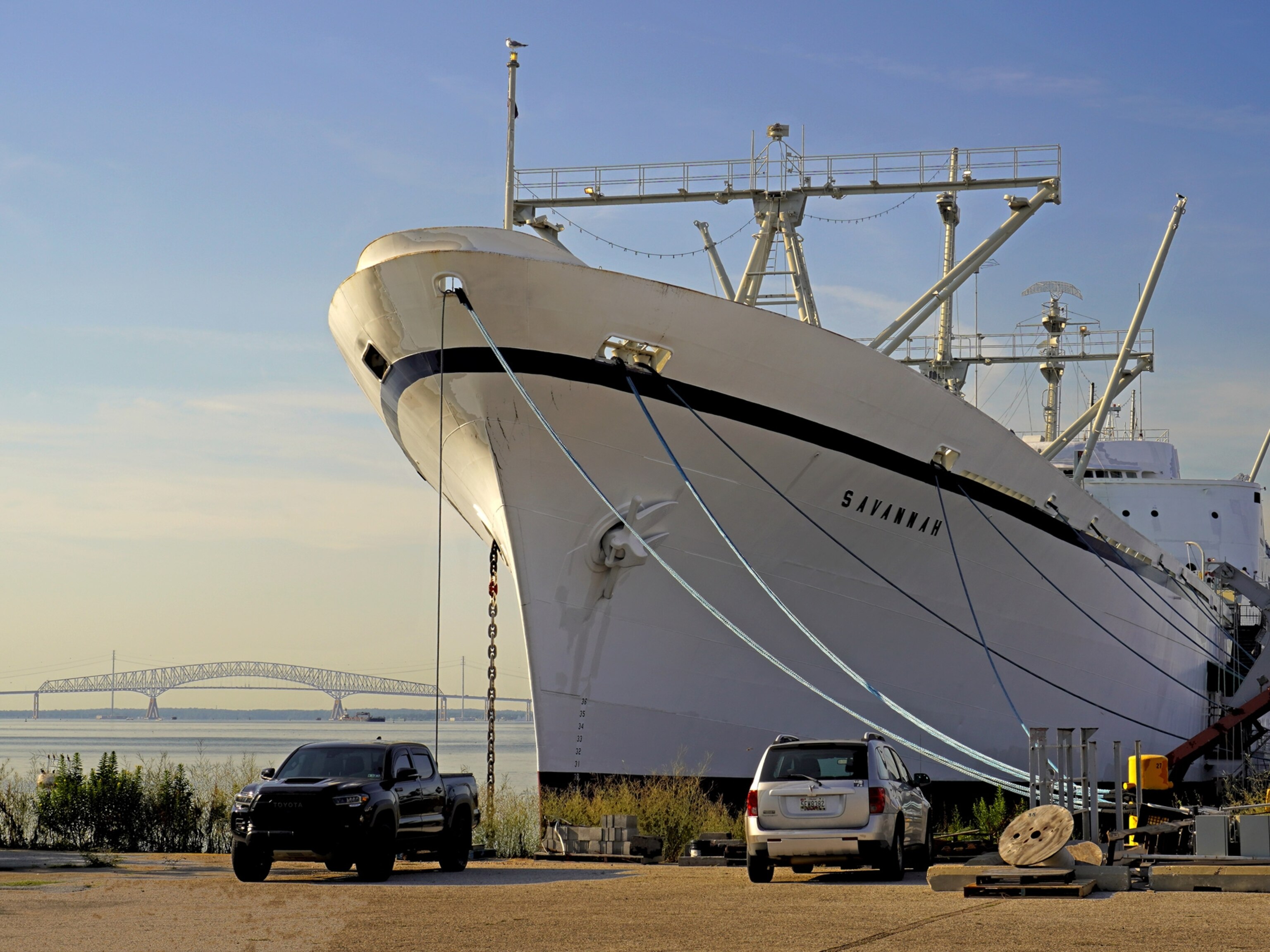
This ship was supposed to usher in an age of nuclear-powered travel
- Environment
- Perpetual Planet
History & Culture
- History & Culture
- History Magazine
- Mind, Body, Wonder
- Paid Content
- Terms of Use
- Privacy Policy
- Your US State Privacy Rights
- Children's Online Privacy Policy
- Interest-Based Ads
- About Nielsen Measurement
- Do Not Sell or Share My Personal Information
- Nat Geo Home
- Attend a Live Event
- Book a Trip
- Inspire Your Kids
- Shop Nat Geo
- Visit the D.C. Museum
- Learn About Our Impact
- Support Our Mission
- Advertise With Us
- Customer Service
- Renew Subscription
- Manage Your Subscription
- Work at Nat Geo
- Sign Up for Our Newsletters
- Contribute to Protect the Planet
Copyright © 1996-2015 National Geographic Society Copyright © 2015-2024 National Geographic Partners, LLC. All rights reserved
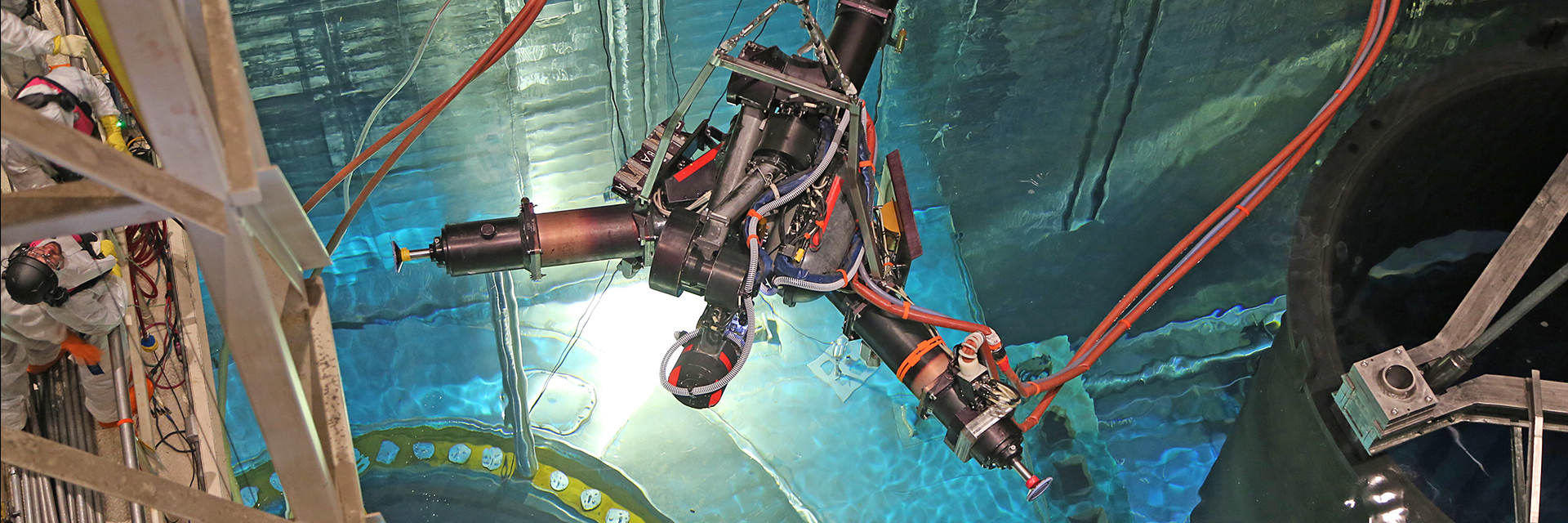
Virtual Field Trips
Navigating Nuclear Virtual Field Trips take students behind the scenes to some of the most interesting places in the world—or even in this galaxy!
Tour the largest nuclear power plant in the United States. Explore Idaho National Laboratory and meet the men and women discovering solutions to our energy challenges. Or travel into deep space to imagine how humans might live on the moon, Mars, or even farther.
Nuclear Frontiers
Inspire students to explore the possibilities of nuclear technology on Earth before planning their own colony on the moon. Along the way, students will meet a variety of stellar special guests who share their out-of-this-world experiences. Targeted to grades 3-5, but engaging for all ages.
Set the stage for learning with standards-aligned activities in our companion guide.
Download the Educator Guide
Nuclear Reimagined—Idaho National Laboratory
Journey to the leading nuclear research facility in the country, Idaho National Laboratory. Step inside a nuclear reactor, explore unexpected careers in nuclear science and see what the future may hold thanks to advances in nuclear capabilities. Targeted to high school students, this VFT is also appropriate for middle school student career exploration.
Activities in our companion guide encourage students to see themselves in nuclear careers.
Behind the Scenes at Palo Verde Generating Station
Join us as we go behind the scenes at the Palo Verde Generating Station, the largest power plant in the United States. See how nuclear technologies are helping to develop more environmentally-friendly electrical power! Targeted to middle school students, this VFT can also be used to learn how nuclear power plants work in all grade bands.
Prepare your students with our standards-aligned companion activities to extend the learning from the Virtual Field Trip to the classroom. Further your students' interest through in-depth conversation and hands-on activity.
Last modified October 29, 2021, 4:39pm CDT

Unitar Around the World
- New york office
- Hiroshima office
- Bonn office
- About UNITAR
- News and Stories
360-Degree Virtual Tours Bring Hiroshima to the World: UNITAR Nuclear Disarmament and Non-Proliferation Training 2022
- UNITAR will use 3D virtual technologies to bring to online learners the powerful experience of visiting the Peace Memorial Park in Hiroshima.
- The 360-degree tour will include the inside of the Atomic Bomb Dome and 14 other monuments around the park.
- The virtual tour will be used in the UNITAR Nuclear Disarmament and Non-Proliferation Training Programme 2022 (25 February to 18 March 2022).
- The training programme teaches participants about the Treaty on the Non-Proliferation of Nuclear Weapons and the latest developments in nuclear disarmament and non-proliferation.
- Programme participants are nominated officials from 19 Asian countries. They work on nuclear disarmament in the ministries of foreign affairs and defense.
- UNITAR plans to make some of the virtual tours publicly available on its website.
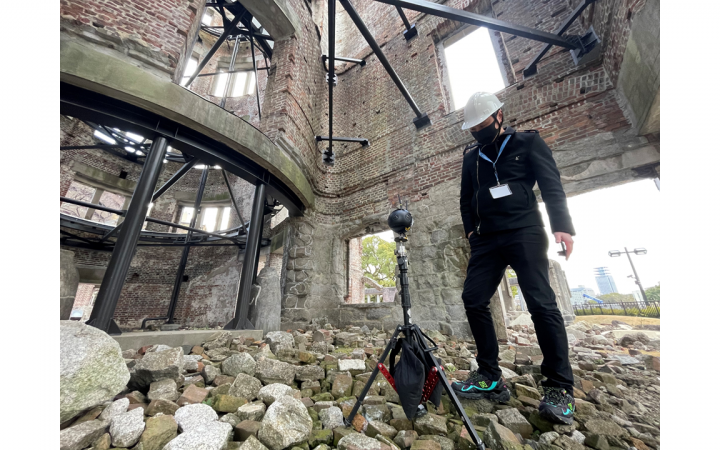
21 February 2022, Hiroshima, Japan – UNITAR Division for Prosperity will introduce 360-degree virtual tours to this year’s training programme on nuclear disarmament and non-proliferation , to be held from 25 February to 18 March 2022. UNITAR also plans to make some of the tours publicly available from the UNITAR website.
Before the COVID-19 pandemic, UNITAR relied on in-person visits to Hiroshima and meetings with hibakusha (atomic bomb survivors) to let participants feel the destruction and suffering caused by atomic bombs. With trainings going online, UNITAR is turning to 3D technologies to bring that powerful experience to participants. The emotional connection motivates participants to work for the abolishment of nuclear weapons.
The 360-degree tours will include the Peace Memorial Park, which symbolizes the Hiroshima’s destruction from the atomic bomb and its reconstruction. Visitors will be able to explore 15 monuments in the park, including the Atomic Bomb Dome. The virtual tour will give participants a special glimpse of the inside of the dome, which is usually closed to visitors.
The tour was inspired by the hi-meguri , or tour of monuments, that Hiroshima school children do in their peace studies. In the activity, children go around the Peace Park, collect stamps, and learn why and to whom the monuments are dedicated.
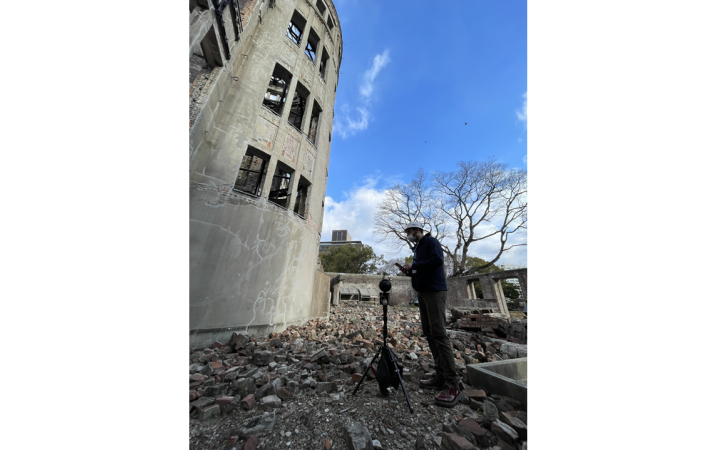
The new technologies will support the programme’s aim to provide participants an in-depth understanding of the history and significance of the Treaty on the Non-Proliferation of Nuclear Weapons (NPT), the Treaty on the Prohibition of Nuclear Weapons, and the current state of discussions on nuclear disarmament and non-proliferation. The virtual tours will complement microlearning modules, webinars with global experts, and a mock negotiation.
The programme is for representatives from ministries of foreign affairs and of defense from 19 Asian countries. The participants play or are expected to play an active role in nuclear disarmament negotiations, which is why the UNITAR programme seeks to equip them with effective negotiation and communications skills.
The 2022 round marks the eighth year of this UNITAR training. It embodies Hiroshima’s legacy and UNITAR’s commitment to promote a peaceful world free of nuclear weapons .
https://presswire.com/content/5633/360-degree-virtual-tours-bring-hiroshima-world-unitar-nuclear-disarmament-and-non
Just Added! New Science is Everywhere Camp Week-long Camp.
July 29-August 2 from Pre-K to Grade Six. Register today!
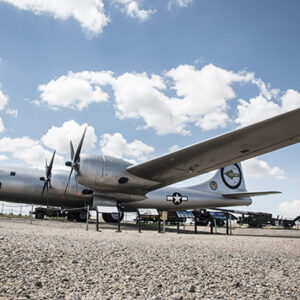
Virtual Museum Tours
Are you interested in having a National Museum of Nuclear Science & History professional or volunteer to speak to your group, organization, or students in a live, virtual tour of this Smithsonian Affiliate museum? The Nuclear Museum will provide the Zoom platform for a tour where all participants can engage and interact with their very own tour guide as your group explores their chosen area of the National Museum of Nuclear Science and History.
Our museum has a team of professionals who provide the most in-depth and interesting topics for virtual events that share the museum's mission as America's resource for nuclear science and history. With such dynamic and diverse backgrounds, you will likely find a tour guide who will provide another level of expertise to your virtual tour.
With 30,000 square feet inside and nine acres outside, there is truly so much to see and learn!
You have the option of building your own museum tour by selecting either two or three different exhibits. A tour of two exhibits lasts approximately 30-45 minutes, and a tour of three exhibits lasts approximately 45 minutes - one hour.
As a special promotion, you also have the option to choose from two unique and VIP tours with the museum's Executive Director or the Museum Curator. Please see below for these options and pricing.
A tour of two exhibits costs $50, and a tour of three exhibits costs $75. We ask that the group stay under 20 participants, but the option to allow more attendees is available at an additional fee. This will be determined at the time you speak with your museum representative when planning your tour.
Once you view the museum's list of tours below, please fill out the Tour Inquiry form to better inform our team of your needs. We will be in touch soon after we receive your form in order to discuss further. Once you have spoken with a museum representative about your virtual program, you will receive a link to complete payment.
Each program will take place via Zoom through the National Museum of Nuclear Science & History's account. We will send you the links needed for each program once the museum team member has been in touch and payment has been received.
Tour Inquiry Form
* Is your group in such a drastically different time zone that you are unable to make a virtual tour work with the museum's operating hours of 9 am to 5 pm Mountain Time? If so, we invite you to email [email protected] about the possibility of pre-recording a tour specifically for your group. You can also send in questions in advance that the museum's talented docents can answer at the end of the tour.
Exhibition Choices (Pick Two for $50 or Three for $75)
- Manhattan Project: This tour explores the initial panic among scientists in 1938 as fission was discovered in Germany during Adolph Hitler’s rise to power in the Nazi regime. The realization of the immense power that would be released led to the American Manhattan Project, the super-secret crash program to beat the Nazis to gain the atomic weapon. Tour the museum's impressive exhibition of Critical Assembly and follow the timeline of the Secret Manhattan project through other displays.
- Trinity, The First Test: As the Manhattan Project progressed, Army leaders and Manhattan Project scientists realized that the complex technologies that were expected to work in the “implosion weapon” needed to be tested. Explore the effort to create plutonium in CP-1 and at Hanford, the Trinity test; the world’s first atomic detonation, and what it revealed that lead to the devastation of the Japanese cities of Hiroshima and Nagasaki and the end of WWII.
- The Dark Cube: This exhibition focuses on a dense, two-inch charcoal-black cube made of pure uranium metal that Nazi scientists suspended with 663 other similar cubes during World War II in an effort to create the world’s first atomic bomb. During Hitler’s rise to power, Germany was at the cutting edge of nuclear technology, having discovered how to split the atom and then realizing the immense amount of energy that is released in doing so. This intriguing object will be highlighted in telling the story of Heisenberg’s efforts and eventual failure to create an atomic weapon during a critical time in world conflict.
- The Cold War: In 1949 the Soviet Union conducted its first atomic test kicking the West into a panic and signaling the start of the “cold war”. How could they achieve this so quickly after only 4 years? Advances in weapon technologies and delivery capability lead quickly to an arms race and high anxiety as other countries joined the “nuclear club”. Explore MAD, “the triad”, and the fall of the wall that saw the collapse of the USSR.
- Heritage Park: This outside walking tour of our nine-acre outdoor exhibit area explores significant historical artifacts such as the B-29 Superfortress, the B-52B Stratofortress that dropped the last atomic weapon test, the beautiful B-47 Stratojet, ICBM’s, Cruise Missiles, “Atomic Annie” the atomic cannon, fighter jets including the striking F-16 Fighting Falcon, and a MiG 21 Russian jet. Explore the only full-scale, 100 ft Trinity test tower, and look at the scale of the conning tower of an actual nuclear submarine.
- Atomic Culture : As with any new technology that is really cutting-edge, advertisers, toy makers, and cultural products soon reflect this newest of new. In the 50’s, ’60s, and 70’s, toys, home appliances, movies, music, and even cars had atomic themes. With artifacts such as comic books, a De Lorean car, and awesome nuclear-themed toys, this unique tour is a fun look back at many artifacts of these eras that reflect a futuristic flair of science in our lives.
- Energy Encounter: Nuclear Power is an important option for the United States and the rest of the world to meet all our future energy needs. Currently, nuclear power plants provide about 17% of the world’s electricity. This exhibit looks at the world’s dependence on all energy forms and how nuclear power will help fulfill those needs.
- Nuclear Waste Transportation: Nuclear waste and its related issues are often hot items in our news. Radioactive waste occurs at all stages of the nuclear fuel cycle, whether it is from producing electricity or from nuclear medicine applications. Dealing safely with radioactive waste is critical to the environment as well our own safety. Visitors will learn how waste is characterized, treated, handled, transported and stored, as well as options for recycling and reprocessing.
- Nuclear Medicine: See the history of nuclear medicine and how it contributed to the advancement of medical technology. Visitors will learn how modern-day advances in nuclear medicine are saving millions of lives every year. By using very small amounts of radioactive material, diseases can be diagnosed and treated.

MIT Nuclear Reactor Laboratory

Search this site
- Headquarters
- Radiation Protection
- Reactor Experiments
- Reactor Physics Analysis
- Neutron Activation & Elemental Analysis
- Neutron Beam Applications
- Proposal Submission
- The Fission Process
- Core Description
- Reactor Systems
- Current Power & Schedule
- Reactor Operations
- Experiments
- Neutron Beam Ports
- Pneumatic Tubes
- Post Irradiation Examination
- Neutron Transmutation Doping of Silicon
- Medical Isotope Irradiations
- Neutron Imaging and Tomography Facility
- Teacher Resources
- News Archive
- Announcements
Education & Outreach
Explore MIT's Nuclear Reactor Lab through a unique opportunity to tour the MIT Reactor (MITR) and its facilities, offered to school groups, professionals, and the public. Choose between our in-person and virtual lectures and tours to learn facts and insights about nuclear science, radiation safety, how we use the MITR, and our reactor is operated. Lectures and tours aren't offered outside of normal business hours or on MIT Holidays . We're excited to feed your curiosity about nuclear science and engineering through our lectures and tours!
In-Person Tour Requests
⚠️ Our tour request form is temporarily closed until Monday, April 29th, as we process existing requests. Due to high demand and limited staff availability, tours are mostly unavailable until June. Your previously submitted request is included in our scheduling plans, even if submitted earlier this year. We apologize for any inconvenience and offer virtual tours via Zoom as an alternative. Our Outreach Coordinator will be confirming availability and scheduling tours accordingly.
In-person tours for groups of up to 20 people run on weekdays from 9:00am to 3:00pm, and last 60-90 minutes. Please request tours at least 7 business days in advance , with a 2:00pm latest start time if having an optional lecture. Small groups (5 or fewer people) and individuals can join tours based on availability listed on the tour request form. Larger groups should submit a contact form before submitting a tour request to discuss if we'd be able to accommodate the size of the group.
The reactor shuts down for quarterly routine maintenance outages during the first two to two-and-a-half weeks of January, April, July, and October. We do not offer tours during our quarterly outages.
Virtual Tour Registration
Individuals or groups can sign up for a virtual tour using the form below - our virtual tours don't have a participant limit. Our virtual tours have a 60-minute dedicated time slot to accommodate questions from the audience, but can end early or run long depending on questions or discussion at the end (we love questions!).
After being introduced to the design and use of the MITR in a few primer slides, you’ll watch footage of the stops along our in-person tour route while being live-narrated by one of our staff members. Virtual tours are family-friendly and available to the public. Educational or large sized groups can request a private tour, with or without a full 60 minute lecture presentation before the tour, by submitting a contact form inquiry .
Here are some bonus videos to introduce you to our facility before you come for a tour or have your virtual one. These videos are different than our virtual tour and can help tour participants become more engaged by introducing them to topics in advance to create a small amount of familiarity behind them.
Reactor Tour Video
Take a look inside MIT's Nuclear Reactor Lab (K-12 audience):
5 Things You Wouldn't Expect a Nuclear Reactor To Do
Some surprising ways you can utilize a nuclear reactor, specifically at MIT's Nuclear Reactor Lab:
Hi! This site is an off-shoot from my original The Virtual Nuclear Tourist! Nuclear Power Plants Around the World site because I found that folks having an interest in nuclear energy have very specific questions. Thus this site attempts to answer the following:
- Why is nuclear power used?
- How does nuclear power compare to other ways of generating electricity? Can I see pictorial comparisons ?
- What types are plants are used in the United States? There are 2 - Boiling Water Reactor and Pressurized Water Reactor
- Where are nuclear power plants located in the United States?
- How is nuclear power regulated?
- What types of nuclear waste are generated? There are 2 categories - Low Level Waste and High Level Waste . Pages with more on Low Level Waste and Spent Fuel and High Level Waste .
- What are the environmental effects of nuclear power?
- What about radiation safety ?
- What's inside those buildings at nuclear plants?
- Can I see pictures? Each page has pictures. The index to the 500+ pictures on the site remains to be built.
- What are considered as minor events ( accidents and transients ) and major events at nuclear plants?
- What is a meltdown ?
- What emergency planning is done for nuclear plant events? ( More )
- What are some good subject-based and geographically-based links?
Thank you for taking the time to stop by. I truly hope that you enjoy your visit and the information provided in the site. If you have more extensive questions, I would suggest going to the Table of Contents of the Virtual Nuclear Tourist site.
I can no longer guarantee a timely response to your e-mail questions. If you do wish a response to questions, I would suggest checking the Q/A page or using the Guestbook .
Joseph Gonyeau 11/25/2001 (updated)
Copyright © 1996-2004. Joseph Gonyeau . All rights reserved. Revised: November 25, 2001.

Visit the world’s first nuclear power plant – virtually
November 7, 2022
By Liza Raley

The COVID-19 pandemic didn’t stop a group of Scouts in Richmond, Kentucky, from getting their nuclear science merit badges.
Ted Simmons, nuclear science merit badge counselor, grew up in Idaho Falls, Idaho, home of Idaho National Laboratory (INL) and Experimental Breeder Reactor-I, the nation’s first electricity-generating nuclear reactor.
“I had been to EBR-I several times and when I was invited to teach the nuclear science merit badge, I wished that I could pack up the troop and head to Idaho.”
Instead, Simmons took advantage of INL’s virtual tour.
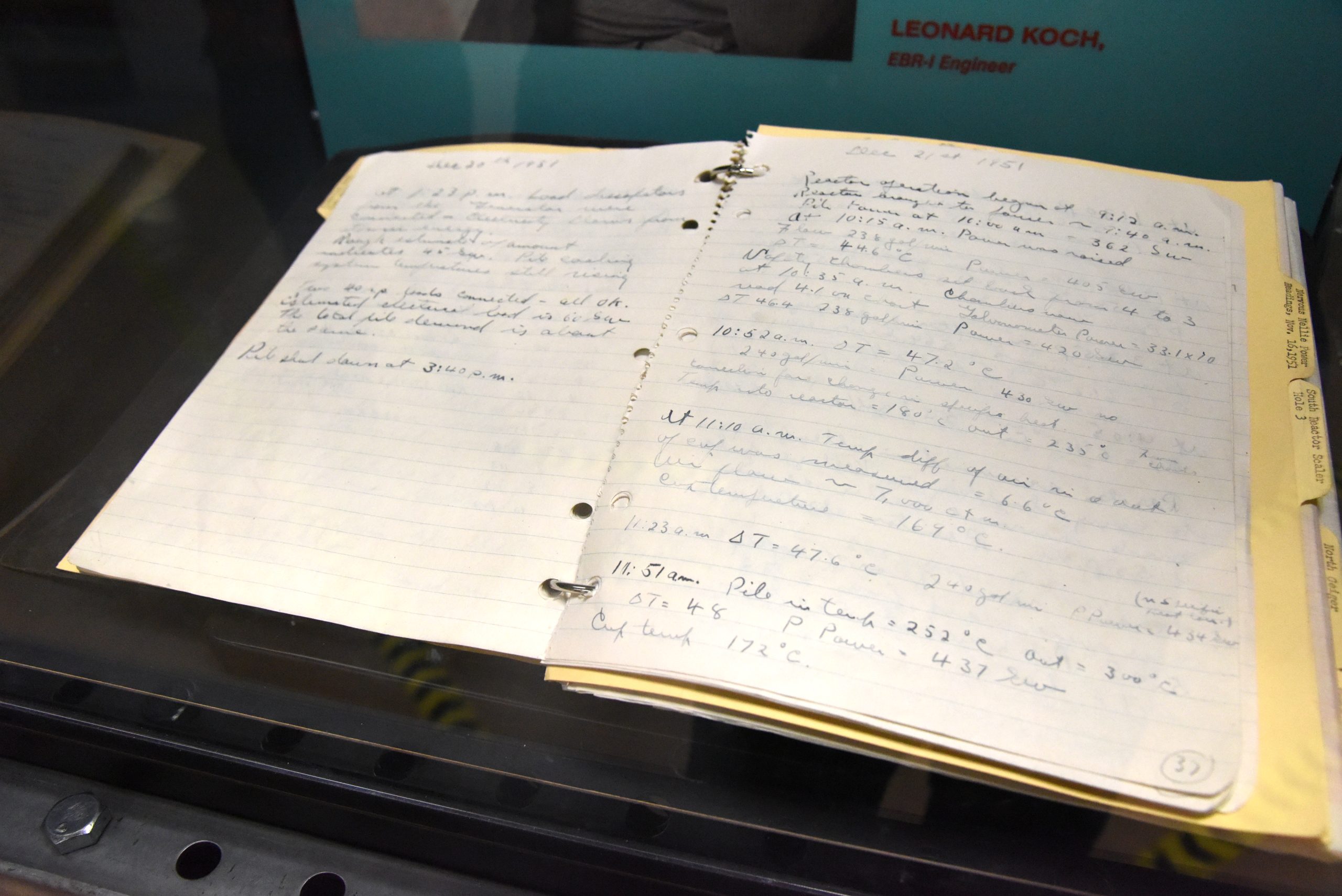
In 1949 it was becoming clear what could be destroyed by splitting the atom. Some of the scientists working on the weapons project in the United States wanted to find out what could be created with nuclear energy instead. A mere two years later, on Dec. 20, 1951, in a remote location in eastern Idaho, those scientists produced enough electricity to power four light bulbs. It was the first time in history a useable amount of electricity was generated from atomic energy.
About 10,000 people now visit the EBR-I Atomic Museum every year between Memorial Day and Labor Day. That changed when the museum closed its doors during the pandemic. That’s when the INL Tours department created a series of virtual tours – one of them highlighting EBR-I.
“We’re very proud of the work we do at INL, and we wanted to continue sharing the history, and the future of nuclear research, with everyone who wants to learn about it, whether in-person or online,” said Shelly Norman, INL Tours lead.
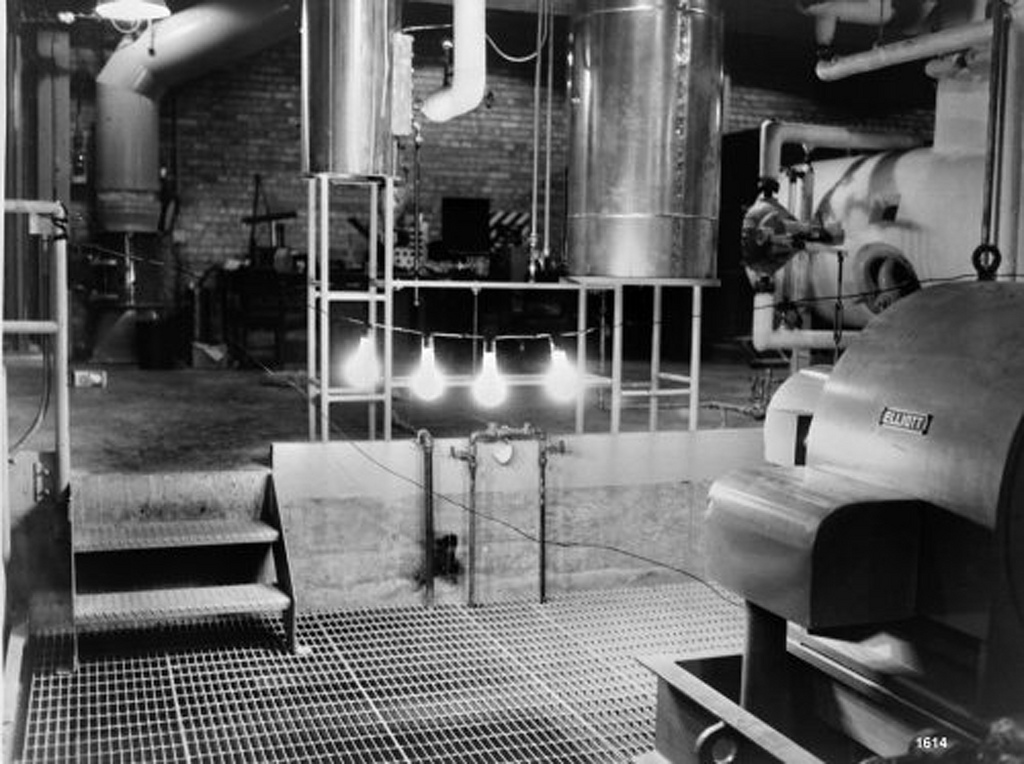
The virtual tour, just like the in-person tour, takes you from the beginning, when scientists wondered what could be created by splitting the atom, to the very moment electricity was generated by nuclear power. Visitors can see the control room, the top of the reactor, the first pair of manipulator arms and much more. According to Scoutmaster Kent Wilson, “The virtual tour was very interesting and well done. The Scouts’ attention was captured, and it was the perfect wrap-up for the four-week merit badge sessions. And the Scout leaders were just as intrigued as the boys and girls.”
Scoutmaster Mike Hale said, “There are so many times you earn a merit badge and only get to read about what professionals are doing in the field. This allowed us to see and experience what they do under the guidance of an actual professional.”
Moxen Hale, a 13-year-old Scout, recommends the virtual tour.
“It was very enjoyable,” he said. “It was fun, and I got to see everything without the long car ride.”

In addition to EBR-I virtual tours, INL offers virtual tours of the Advanced Test Reactor, the Materials and Fuels Complex and more. Although now closed for the season, the EBR-I Atomic Museum is free and open to the public seven days a week from Memorial Day through Labor Day. To learn more about virtual tours at Idaho National Laboratory, visit inl.gov/tours or email [email protected] to schedule a virtual tour for your group.
Related news
Research across cultures: relationships between inl and japanese scientists throughout history, breaking down recycling challenges, one slice at a time, from florida floods to idaho desert: understanding impacts of flood damage on vehicle batteries, about idaho national laboratory.
Battelle Energy Alliance manages INL for the U.S. Department of Energy’s Office of Nuclear Energy. INL is the nation’s center for nuclear energy research and development, celebrating 75 years of scientific innovations in 2024. The laboratory performs research in each of DOE’s strategic goal areas: energy, national security, science and the environment.
Follow us on social media: Facebook , Instagram , LinkedIn and X .
What People Are Reading
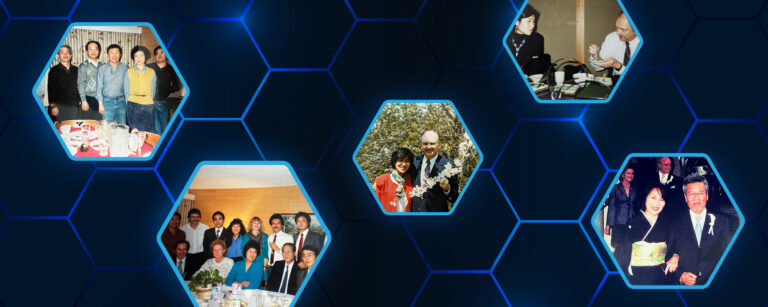
Research across cultures: Relationships between INL and Japanese scientists
In her kitchen, Keiko “Kay” Rohrdanz pours tea into small...

From Florida floods to Idaho desert: Understanding impacts of
Out on the Idaho National Laboratory desert Site sits an...

Lab, industry partnership leads to tech success
Twin Falls entrepreneur and inventor Mark Melni is on top...

STEM Scholars, CyberCore and Clean Energy camps registration opens
Idaho National Laboratory is hosting STEM Scholars, CyberCore and Clean...

Battelle Energy Alliance manages INL for the U.S. Department of Energy’s Office of Nuclear Energy
- DOE Office of Nuclear Energy
- DOE Idaho Operations Office
Idaho National Laboratory 1955 N. Fremont Ave. Idaho Falls, ID 83415 866-495-7440
- Equal Opportunity Employer
- Privacy and Accessibility
- Vulnerability Disclosure Program
RESEARCH AREAS
- Nuclear Energy
- Integrated Energy
- National & Homeland Security
- Environment, Safety, Health
- Contact Info
- Frequently Asked Questions
- Bus Operations
PARTNERSHIPS
- Research Excellence Programs
- Center for Advanced Energy Studies (CAES)
- User Facilities
- Community & Education Outreach
- Economic & Workforce Development
- Initiating Business with INL
- Fact Sheets
Copyright © 2024 Idaho National Laboratory

- Contact Information
- Mission, Vision and Leadership
- Science & Technology Overview
- Laboratory Directed Research and Development
- The Top 20 Questions About Idaho National Laboratory
- BUS OPERATIONS
- EBR-I Atomic Museum
- ENVIRONMENTAL
- Environmental Policy
- Sustainable INL
- Cultural Resources
- Annual Site Environmental Report
- National Security
- LICENSING & PARTNERSHIPS
- Licensing Process
- Ways to Do Business with INL
- Guide: Partner with DOE Labs
- PROSPECTIVE SUPPLIERS
- Small Business Program
- Procurement Opportunities
- Vendor Portal
- COMMUNITY INVOLVEMENT
- Community Grants
- Community Volunteerism
- Request A Speaker
- ECONOMIC & WORKFORCE DEVELOPMENT
- K-12 STEM EDUCATION
- K-12 STEM Education Grants
- Resource Library
- Explore STEM Careers
- Interactive Periodic Table of Elements
- Community Outreach
- National & Homeland Security
- Inclusion and Diversity
- News Archives
- VIEW ALL JOBS
- Internships
- Joint Appointments
- Postdoctoral Positions
- INCLUSION & DIVERSITY
- EQUAL OPPORTUNITY EMPLOYER
Processing, please wait…
- Skip to global NPS navigation
- Skip to the main content
- Skip to the footer section

Exiting nps.gov
Thing to Do
Hanford: Attend a B Reactor Tour
Manhattan Project National Historical Park
NPS/BURGHART
Wheelchair accessible buses and sign-language interpreters are available upon request with two weeks advance notice. The main tour route in the B Reactor is wheelchair accessible on smooth finished surfaces. For more information on accessibility, please visit the Department of Energy’s tour reservation page for more information. You may also email them at [email protected] or call 509-376-1647.
- manhattan project national historical park
- tour behind the fence
Last updated: September 28, 2023
TOUR OF NS SAVANNAH

Welcome to the Nuclear Ship Savannah , the world's first nuclear-powered merchant ship.
Savannah was a signature element of President Eisenhower's Atoms for Peace program. She was constructed as a joint project of the former Atomic Energy Commission (AEC) and the Maritime Administration. She operated from 1962 to 1965 in experimental service, at which time the AEC issued her commercial operating license number NS-1. Savannah continued in demonstration service as a cargo ship until 1970 when she ended her active career. She was defueled in 1971 and her reactor made permanently inoperable in 1975-76. About 95% of the power plant is intact and remains onboard ship. Savannah is still licensed by the Nuclear Regulatory Commission (NRC is the successor to the AEC), and will remain so until nuclear decommissioning.
The defueling, active clean up work and natural decay over 30 years has left only small amounts of radioactive material aboard ship. This material is located in only a few, well monitored locations aboard ship.
Savannah was nominated to the National Register of Historic Places in 1981. She was named a Mechanical Engineering Landmark by the American Society of Mechanical Engineers in 1983. She was named a Nuclear Engineering Landmark by the American Nuclear Society in 1991. And finally declared a National Historic Landmark by the U.S. National Park Service on July 17, 1991.
Savannah is presently located in the Port of Baltimore, Maryland, under a long-term lay berth contract with Canton Marine Terminals. The U.S. Maritime Administration Savannah Technical Staff of the Office of Ship Disposal manages the activities onboard the ship, with strong emphasis on licensed facility operations and pre-decommissioning planning. The Maritime Administration intends to maintain Savannah in protective storage for some years into the future; however, under current law and regulation the decommissioning process must be completed and Savannah 's operating license terminated no later than December 2031. In the normal course of NRC regulation decommissioning would include the complete dismantling of the reactor. The historic ship community would like to see an exception made to allow for cleaning, then preservation of Savannah 's historic nuclear reactor aboard ship.
We hope this online tour will provide you with a glimpse of what life was like for the passengers and sailors aboard this remarkable vessel. It will also enable you visit many spaces that have never been opened to the public because of the vertical ladders, confined space and radiological controls.
Although not open for visiting on a regular schedule at this time, the Savannah Technical Staff schedule periodic tours provided that these can be accommodated without interference to normal ship's business. For more information about touring the ship, please send an e-mail to: [email protected] and include "Tour Request" in the subject line.
Your virtual reality tour of the NS Savannah begins in the Purser's reception area. To provide the best experience possible without knowing what software is installed on your computer, or how fast your internet connection is, we have several viewing choices. (Fast photos is great for slow internet connections and for visually impaired users with an Internet reader.)
Click in the list below to visit in any order:
Solving problems viewing the panographic images. Acknowledgements

National Museum of Nuclear Science & History
Ranger in your Pocket
Welcome to “Ranger in Your Pocket,” with virtual tours of Manhattan Project sites! Each tour features audio/visual vignettes drawn from interviews with Manhattan Project veterans and their families. Use your smartphone or tablet to take a self-guided tour while visiting Hanford’s B Reactor or Bathtub Row at Los Alamos, or take a tour from the comfort of your home.
Oak Ridge Tours
Voices from japan tour, manhattan project sites & themes, new mexico tours, hanford tours, manhattan project innovations, coming soon.
Xcel finds elevated tritium levels at Monticello Nuclear Plant

Xcel Energy has found higher-than-natural levels of radioactive tritium in a monitoring well at its Monticello Nuclear Plant.
One sampling found a level of 21,300 picocuries per liter of tritium, which is slightly above the federal Environmental Protection Agency drinking water standard for tritium of 20,000 picocuries per liter.
Tritium is a radioactive form of hydrogen that occurs naturally and as a byproduct of electricity production at nuclear power plants.
Xcel recently drilled a new well near the reactor because workers detected a leak inside the building. Plant engineers believe the tritium came from a leaking valve that was repaired in May.
Workers are drawing water from near the reactor building into the well and putting it in containers. Xcel says the water will be reprocessed through normal plant systems, which do not come in contact with the environment.
Xcel says if someone consumed drinking water containing 21,300 picocuries of tritium for a year, he or she would receive an annual radiation dose of 0.97 millirem. According to the U.S. Department of Energy, dental and chest X-rays result in 25 millirems of radiation.
Xcel is applying to the Nuclear Regulatory Commission to expand production and waste storage at Monticello. The NRC recently decided a full Environmental Impact Statement is not needed, because the expansion would produce no significant environmental effects.
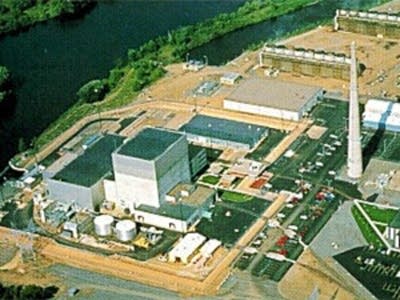
- Judge to weigh in on Prairie Island expansion plan
- Safety drill this week at Monticello nuclear plant
- Group targets ban on new nuclear plants
- Top secret nuclear missile facility opens to public
- Slideshow: The Prairie Island nuclear facility
Create a More Connected Minnesota
MPR News is your trusted resource for the news you need. With your support, MPR News brings accessible, courageous journalism and authentic conversation to everyone - free of paywalls and barriers. Your gift makes a difference.
The Virtual Nuclear Tourist ! Nuclear Power Plants Around the World
Welcome to the new non-frame version. Table of Contents for 300 pages and 700 pictures and graphics ==> Frame version
See the new Fukushima Daiichi page
Renewable Energy - Types and Issues
Table of Contents
Ukraine-Russia war latest: Fighting 'intensifies in eastern Ukraine as troops fall back'; UK estimates 450,000 Russian losses since war began
Gen Oleksandr Syrskyi says his troops have taken up new positions west of Berdychi, Semenivka and Novomykhailivka in order to conserve their forces while armed forces minister Leo Docherty tells the UK Defence Journal tens of thousands have deserted Russian's military since February 2022.
Sunday 28 April 2024 22:34, UK
- Fighting intensifies in eastern Ukraine as troops fall back
- UK minister estimates 450,000 Russian losses since war began
- Tajikistan citizens warned not to travel to Russia
- 'Well-provisioned' Ukrainian troops could prevent Russian advances
- Russia destroys 17 drones launched by Ukraine
- Explained : Why is Chasiv Yar the next target for Russia?
- Your questions answered: Will Ukraine launch another spring offensive?
- Listen to the Sky News Daily above and tap here to follow wherever you get your podcasts
That's all from our live coverage for tonight. For a reminder of today's updates, you can scroll back through this live blog.
Volodymyr Zelenskyy has said Ukraine is still waiting for promised supplies from its allies, urging the international community to hurry up.
In his nightly video address today, he said: "We are expecting those volumes and scope that can change the situation on the battlefield in Ukraine's interests."
He also said he had spoken with US House minority leader Hakeem Jeffries, and had thanked Congress for passing the long-awaited aid package for Ukraine.
"In my conversation with Mr Jeffries, I underscored that Patriot systems are needed, and as soon as possible," he said.
Ukrainian forces are facing a worsening position in the east and are still awaiting the delivery of US weapons.
Mr Zelenskyy has repeatedly called for more air defence systems to protect its citizens and infrastructure, particularly the Patriot systems.
Russia will start restricting those called up for military service from leaving the country, according to news site Meduza.
Electronic summonses will reportedly be sent out from 1 November.
Those who are called up will not be allowed to leave Russia, and they will face further restrictions if they do not go to a military registration and enlistment office within 20 days.
In that case, they will not be allowed to register to run a business, drive a car, take out loans, or conduct real estate transactions, Meduza said.
New satellite imagery appears to show damage at Russia's Kushchyovskaya military airbase in the Krasnodar region.
Planet Labs shared images comparing how the base looked on 19 March compared with today.
A source in Ukraine's security and defence forces earlier told Ukrainian media that Kyiv had launched drone strikes against the airbase and two oil refineries overnight.
They told the Kyiv Independent the SBU and Ukraine's Defence Forces hit the airbase where "dozens of military aircraft, radars, and electronic warfare devices were stationed".
Earlier we brought you news of a Russian drone strike on the Black Sea city of Mykolaiv.
The attack set a hotel ablaze and damaged energy infrastructure, Ukrainian officials said.
Vitaliy Kim, the governor of the southern Mykolaiv region, said in an update the attack had "seriously damaged" the hotel.
The strike also damaged heat-generating infrastructure in the city.
There were no casualties, he said.
A priest sprinkles holy water on believers holding willow branches during an Orthodox Palm Sunday service.
The service is being held in Donetsk, in an area occupied by Russian forces.
Russia gained full control of the city of Donetsk in October 2022, but the area has been a major site of fighting since 2014.
The majority of people in Ukraine are Orthodox Christian, although they follow different branches.
As we've been reporting, Russia has been pushing forward in Ukraine's eastern Donetsk region.
Ukrainian military officials say their troops are falling back to new positions in at least three places along the frontlines.
But they are facing public criticism about the transparency of their military updates.
Ukrainian military blogger Myroshnykov and Ukraine's DeepState monitoring group, which updates daily changes in frontline positions, both say the updates have been unrealistic.
DeepState shared a video on social media of a Russian soldier being killed in a drone strike in the village of Soloviove, arguing such footage was being used to mask a bigger picture.
"You can watch with pleasure forever the video of a Russian [soldier] being torn to pieces, but nearby there is another location that requires attention: Muscovites calmly moving around the village, keeping it under control.
"The [Ukrainian] Defence Forces inflict fire damage on them, and one can repeat at least a billion times that two-thirds of the village is under the control of the Ukrainian military, but the picture of reality is completely different."
It appeared to be referring to a statement from Nazar Voloshyn, a spokesperson for Ukraine's military in the east, who also said the nearby village of Ocheretyne was still two-thirds controlled by Ukraine.
However, DeepState says it believes Russian troops have been in control of the centre of Ocheretyne for at least three days.
The site accused some military spokespersons of incompetence last week.
Police have arrested a 57-year-old Russian on suspicion of murder following the killings yesterday evening, German news agency dpa reported.
The two Ukrainians were 23 and 36 years old, and lived in the southern German county of Garmisch-Partenkirchen.
They were killed at a shopping centre in the village of Murnau in Upper Bavaria.
The names of the victims and suspect have not been released due to German privacy rules.
It is not clear if the men knew each other.
More than one million Ukrainian refugees fled to Germany following Russia's invasion of Ukraine in 2022.
Donald Trump's stance on Ukraine is "not as black and white as some people think", the Polish foreign minister has said.
The former US president, who is running for election again this year, has said he will not commit to providing Ukraine with defence assistance.
Republicans aligned with Mr Trump were also the reason behind a six-month delay to aid for Ukraine.
But foreign minister Radoslaw Sikorski said in an interview with the Axel Springer media company that Mr Trump had sent Ukraine anti-tank missiles before Russia's invasion "when others were not doing it".
He was referring to Javelin anti-tank missiles supplied by the US in 2018.
Mr Sikorski also said Mr Trump was "right in urging us all in Europe to spend more on defence".
He said he "did not hear any protests from Trump" once the $61bn aid package for Ukraine was approved.
"So, I hope that candidate Trump has seen that this opposition to helping Ukraine is not actually popular in the United States, that it is harming his chances [to be re-elected]," he added.
Earlier we reported that a top Ukrainian general said troops had fallen back from three villages in the east of the country.
We can now bring you more from Oleksandr Syrskyi, the chief of Ukraine's armed forces, about the situation on the ground.
Mr Syrskyi said the Donetsk region (in the east) remains one of the hottest sectors of the frontline as Russia continues its offensive.
He described the situation in the eastern cities of Pokrovsk and Kurakhove as "the most difficult one" now.
Russia is reportedly using up to four brigades (anywhere from an estimated 8,000 to 32,000 personnel) to conduct assault operations in the direction of both the cities, which lie west of Avdiivka, which was captured earlier this year.
Mr Syrskyi said the situation is changing "dynamically" on the frontline as a result.
Meanwhile, Mr Syrskyi said the situation in the south also remains "intense" as Russia tries to advance near the village of Krynky in Kherson.
It also wants to advance towards the villages of Robotyne and Verbove villages in Zaporizhzhia.
Be the first to get Breaking News
Install the Sky News app for free


IMAGES
VIDEO
COMMENTS
The Virtual Nuclear Tourist - Questions about Nuclear Power !!!! A revision to the site is in progress to eliminate broken links and update the site about new reactor trends and designs. My intent is to make more use of PDF pages and combine pages, where appropriate. Due toa a request from some who use the website for online courses, I will ...
Welcome to the new Virtual Nucleartourist.This site is a revision of the prior version which had started Labor Day weekend 1996.. The 300+ page site about nuclear power plants was developed because I've found that most of what the general public hears or sees about nuclear power plants is on TV or in the newspapers and frequently that coverage is incomplete.
Nuclear tourism. Coming around the time of the Fukushima disaster, the idea seems absurd. ... Shadow of Chernobyl," virtual visitors to the radioactive wonderland can identify the hot spots by ...
The event was caused by a combination of human and design issues. The event was undoubtedly the most severe accident to happen at a nuclear power plant. It also represents the first time that nuclear process-related deaths occurred at a commercial nuclear power facility and the offsite public was affected by events at a plant.
Virtual Tours Home. Welcome to the IAEA's self-guided virtual tours. See how the IAEA uses nuclear science, technology and equipment, to verify the peaceful use of nuclear material and to help countries reach their development goals.
Navigating Nuclear Virtual Field Trips take students behind the scenes to some of the most interesting places in the world—or even in this galaxy! Tour the largest nuclear power plant in the United States. Explore Idaho National Laboratory and meet the men and women discovering solutions to our energy challenges.
IAEA safeguards, a series of technical measures to verify that States honour their international nuclear non-proliferation obligations, require Agency inspectors to travel across the world to perform in-field verification of a country's nuclear material and technology. The interactive tour allows visitors to learn about the equipment that IAEA safeguards inspectors use in verifying the ...
This paper presents the Participatory Action Research (PAR) methodology that was employed to elaborate on the virtual nuclear tourism route in the Ignalina Nuclear Power Plant region in an attempt to empower local communities through tourism development. The researchers have been collaborating with a variety of tourism stakeholders and endeavor ...
Advanced Test Reactor Tour. The Advanced Test Reactor at Idaho National Laboratory is the foremost nuclear materials test reactor in the world. This virtual tour describes the reactor, how experiments are conducted, and how spent nuclear fuel is handled and stored. Materials and Fuels Complex Tour.
Our research gives insights into nuclear tourism route construction, proposing a technology acceptance model, suggesting storytelling, virtual navigation, human spatial behavior, digital and human ...
21 February 2022, Hiroshima, Japan - UNITAR Division for Prosperity will introduce 360-degree virtual tours to this year's training programme on nuclear disarmament and non-proliferation, to be held from 25 February to 18 March 2022.UNITAR also plans to make some of the tours publicly available from the UNITAR website. Before the COVID-19 pandemic, UNITAR relied on in-person visits to ...
Visaginas as the atomic, multicultural, and artists' town. It is a speci c attempt to. 'negotiate' around the new place identity, merging the industrial and atomic identity. of grandparents ...
The Nuclear Museum will provide the Zoom platform for a tour where all participants can engage and interact with their very own tour guide as your group explores their chosen area of the National Museum of Nuclear Science and History. Our museum has a team of professionals who provide the most in-depth and interesting topics for virtual events ...
Explore MIT's Nuclear Reactor Lab through a unique opportunity to tour the MIT Reactor (MITR) and its facilities, offered to school groups, professionals, and the public. Choose between our in-person and virtual lectures and tours to learn facts and insights about nuclear science, radiation safety, how we use the MITR, and our reactor is operated.
Energy. The Virtual Nuclear Tourist - Fukushima. Renewable Energy Considerations - Wind ( cost-benefit calculator )- Alternative Energy ( cost-benefit calculator) Impact of Wind Turbines in Klickitat County - Taxes and Valuation - Data Package. klickitat.org - Computers & Services Available. Photography.
The Quick Virtual Nuclear Power Plant Tour. Welcome to the Visitor Center. Hi! This site is an off-shoot from my original The Virtual Nuclear Tourist! Nuclear Power Plants Around the World site because I found that folks having an interest in nuclear energy have very specific questions. Thus this site attempts to answer the following:
The first production of usable nuclear electricity occurred on Dec. 20, 1951, when four light bulbs were lit with electricity generated from the EBR-1 reactor. ... In addition to EBR-I virtual tours, INL offers virtual tours of the Advanced Test Reactor, the Materials and Fuels Complex and more. Although now closed for the season, the EBR-I ...
The US Department of Energy offers reservation-based guided tours of the B Reactor in Hanford, Washington, where scientists and engineers pioneered the technology behind nuclear reactors. These guided tours take you "behind the fence" to see the world's first full scale nuclear reactor. Sign up for one of these tours and learn more about ...
She was named a Nuclear Engineering Landmark by the American Nuclear Society in 1991. And finally declared a National Historic Landmark by the U.S. National Park Service on July 17, 1991. Savannah is presently located in the Port of Baltimore, Maryland, under a long-term lay berth contract with Canton Marine Terminals.
Welcome to "Ranger in Your Pocket," with virtual tours of Manhattan Project sites! Each tour features audio/visual vignettes drawn from interviews with Manhattan Project veterans and their families. Use your smartphone or tablet to take a self-guided tour while visiting Hanford's B Reactor or Bathtub Row at Los Alamos, or…
The Monticello nuclear power plant, which is owned by Xcel Energy. Photo courtesy of the Virtual Nuclear Tourist Xcel Energy has found higher-than-natural levels of radioactive tritium in a ...
The Virtual Nuclear Tourist - Questions about Nuclear Power !!!! Welcome to the new non-frame version. Table of Contents for 300 pages and 700 pictures and graphics ==> Frame version. See the new Fukushima Daiichi page. Renewable Energy - Types and Issues. Table of Contents . Updated Thursday May 19, 2011
Using nuclear power for shipping is not new. There are currently 200 nuclear reactors on ships globally, mostly submarines and naval ships. In the 1950s, the U.S. government built a passenger boat ...
A micro nuclear reactor will have to be light and robust enough to travel 384,400km (238,000 miles) and then be installed for use under extremely difficult conditions, including the intrusive fine ...
Gen Oleksandr Syrskyi says his troops have taken up new positions west of Berdychi, Semenivka and Novomykhailivka in order to conserve their forces while armed forces minister Leo Docherty tells ...